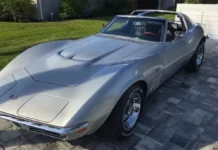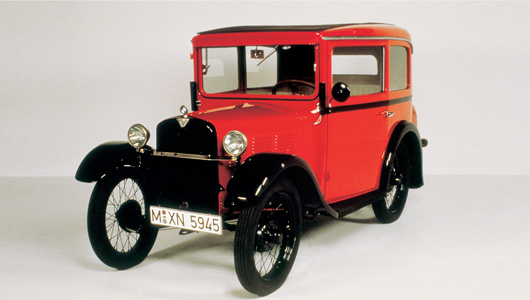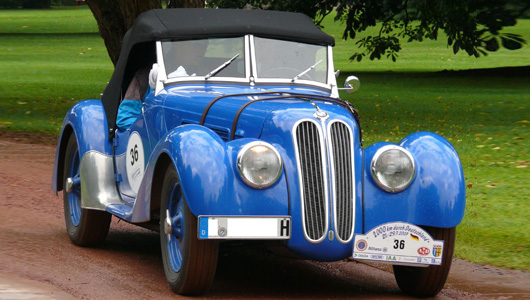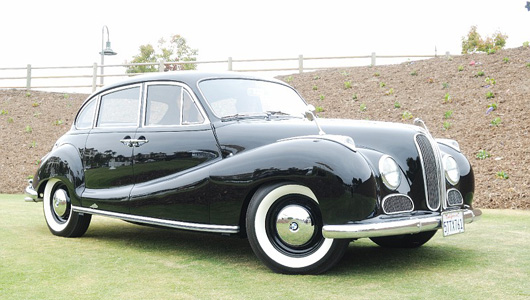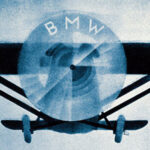BMW is now known as one of the largest car manufacturers mainly because of the cars produced in the last two decades. However, to achieve the success it has today, BMW has gone through nearly 100 years of ups and downs in its development history.
The origin of BMW began in 1913 when Karl Friedrich Rapp, a famous Bavarian engineer working in an aircraft manufacturing plant in Germany, founded the Rapp Motoren Werke company in a suburb of Munich. His company specialized in aircraft engines, but Rapp found them too complicated and unstable. Nearby, Gustav Otto, also an aviation expert, built his own shop called Gustav Flugmaschinefabrik specializing in small aircraft production.

Rapp Motoren Werke later signed a contract with Austro-Daimler to produce the V12 Aero aircraft engine under license. The company developed rapidly, but in 1916, Rapp withdrew from the company due to financial issues. Franz Josef Popp and Max Friz, two Austrians, took over the company. In March 1916, Rapp Motoren Werke merged with Gustav Flugmaschinefabrik to establish the Bayersiche Flugzeungwerke company. Later, it quickly changed its name to Bayersiche Motoren Werke (Bavarian Motor Works) or BMW as we know it today.
In 1917, BMW’s first aircraft engine, the Type IIIa 6-cylinder, went into production. In 1919, Franz Zeno Deimer set a record of 9,760 meters above sea level when he flew a plane using the later generation Type IV engine. After the signing of the Versailles Treaty in 1919, BMW was banned from producing aircraft engines. The company switched to producing railway coaches. When BMW resumed aircraft engine production in 1922, they set over 29 records in the aviation field. The current BMW logo was introduced in 1920 and was inspired by the design of an aircraft propeller.
The first car produced by BMW was the R 32, which was produced in 1923 at the newly constructed Eisenach factory near Munich airport. The R 32 used a horizontally arranged engine on a twin-tube frame and had a power of 8.5 horsepower at 3,300 rpm. This 494cc 2-cylinder car could reach a top speed of 95km/h and within 3 years, BMW produced 3,090 units.
In 1928, a historical event in BMW’s car production took place. Produced at the Aisenbach factory, the Dixi 3/15 PS marked the beginning of BMW’s car production. The Dixi 3/15 PS was produced under license from Austin, and it was essentially the same model as the Bantan in the US and the Datsun in Japan. The early Dixis used convertible bodies and were equipped with a 734cc 4-cylinder engine producing 15 horsepower. Its top speed was 80km/h. In 1929, a new version of the Dixi, the DA2, was produced. The DA2 had an all-steel body and was equipped with a 4-wheel braking system. In 1930, the Dixi achieved its first victory in an automobile race. A total of 18,976 units were produced.
In 1932, the BMW AM 4 (considered the first “real” BMW) was put into production. The AM 4, also known as 3/20 PS, was the successor to the Dixi and the first commercial car produced entirely in-house by BMW. The car was equipped with a powerful 782cc 4-cylinder engine producing 20 horsepower at 3,500 rpm. With this engine, the car could reach a top speed of 80km/h.
In the following years, BMW introduced the 303 in 1936. This was the first BMW to use a 6-cylinder engine and a grille design with two double-profile shapes that later became a characteristic feature of BMW models. Using a lightweight welded tubular frame, independent front suspension, and a rack-and-pinion steering system, the 303 marked an important milestone in car manufacturing history. With a 1173cc engine producing 30 horsepower, the 303 could reach a top speed of 90km/h.
Three years later, in 1938, BMW introduced the 328. This was the most popular and famous sports car of BMW before the war. The 328 was mainly designed for car races, and it even won the race at the Mille Miglia in Italy in 1938. Although it was a racing car, it quickly became a popular street car. It weighed only 558 kg due to the use of an extremely lightweight tubular frame and a hood, doors, and tail made of light alloy. It was equipped with a powerful 1971cc 6-cylinder engine producing 80 horsepower, and it could reach a top speed of 150 km/h. BMW produced a total of 462 units of the 328.
In 1935, BMW set another world record, this time with a 2-wheel vehicle. Emst Henne drove a 500cc motorcycle with a 108 horsepower engine to set a world speed record for 2-wheeled vehicles at 279.5 km/h. This record stood for 2 decades.
However, BMW’s successes did not last long. After World War II, the company was left in ruins. Its factories were destroyed, and a ban on producing anything for 3 years was imposed by the Allied forces as a punishment for BMW’s production of rockets and aircraft engines during the war. The first car after the war, the luxurious 501 sedan, was produced in 1951 but was not compatible with the situation of a country devastated by war. The 501 did not achieve the sales that BMW had hoped for as a result.
A completely different development strategy helped BMW recover. In 1955, the Isetta 250 was introduced to the market and was very successful as small cars became popular in the 1950s. The Isetta was produced under license from Iso, an Italian manufacturer. The car used a 245cc motorcycle engine producing 12 horsepower and had only one door at the front. With this engine, the car could reach a top speed of 85 km/h. In 7 years, a total of 161,728 units of the Isetta were produced.
A few years later, when BMW’s financial situation was still unstable, one of the most memorable models in the company’s history was introduced. Released in 1956, the BMW 507 quickly gained fame. The car was a 2-door convertible designed by Alberecht Graf Foertz, and subsequent models still bear some resemblance to the 507. The BMW 507 used a powerful V8 3136cc engine with 150 horsepower at 5,000 rpm and could reach a top speed of 200 km/h. However, that was not enough to compete with its main rival, the Mercedes 300SL. Although only 252 units of the 507 were produced, it remains an icon of BMW’s efforts and success in the 1950s after the war.
The next step in BMW’s development and the predecessor of the BMW we know today was born in 1962. The 1500, which had been developed during the crisis of the 1950s, was another savior for BMW. The 1500 had a perfect suspension system and a groundbreaking design at that time. With a 1499cc 4-cylinder engine producing 80 horsepower at 5,700 rpm, the 1500 could reach a top speed of 148 km/h. Within 2 years, only 23,807 units of the 1500 were produced. However, if all the other models in this series (including the 1500, 1600, 1800, and 2000) are taken into account, a total of 334,165 units were produced. Based on these models, the first generation of the 5-series, the E 12, was introduced in 1972. The 3-series followed 3 years later with the E 21, and then the 7-series in 1977.
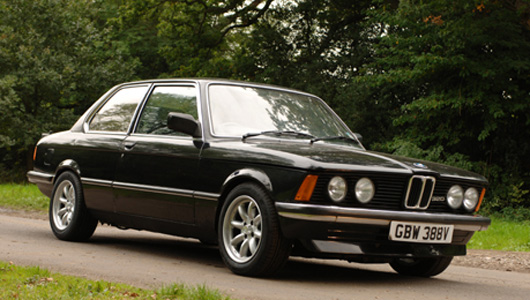
In 1990, BMW returned to the aircraft engine manufacturing industry after establishing BMW Rolls-Royce GmbH (a collaboration with Rolls-Royce). In 1998, after prolonged negotiations regarding the acquisition of Rolls-Royce, BMW officially acquired the rights to the brand and logo from Volkswagen, and the transfer was scheduled to take place in 2003. In 1994, BMW carried out another acquisition, this time of the Rover Group PLC. After heavy losses, Rover separated from Land Rover, and Land Rover was bought back by Ford. BMW acquired the rights to the new Mini model, and the sale was completed in early 2002.
Today, BMW’s Z3, Z8, and all 3, 5, 7 series cars, as well as its sports motorcycles, continue the company’s tradition of producing excellent models based on style, performance, and technological advancements.
Thế Đạt (According to PL&XH/Source: Tổng hợp)
BMW – A Century of Triumphs and Challenges
BMW has established itself as a prominent player in the automotive industry, thanks to its exceptional lineup of vehicles over the past 20 years. However, this level of success did not come overnight. BMW has weathered a century of challenges and triumphs to become the global powerhouse it is today.


